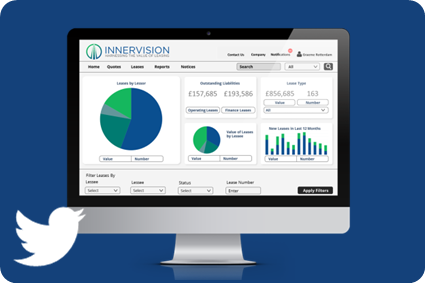How Technology is Causing Leasing and Asset Finance to Evolve
Updated 18th June 2021 | 4 min read Published 3rd March 2015

Technological innovations and upgrades have had a dramatic impact on business. From global meetings being hosted on a tablet device through to the hundreds of online apps available, almost every aspect of business has adapted to help improve the quality and efficiency of business processes.
However, there is one rather large aspect of a company’s procurement and financial operations that has remained static for years – leasing.
Since the tech boom of the late 1990’s, it has not just become useful for companies to keep up-to-date with the latest technological advancements, but in fact imperative for them to adopt and adapt in order to remain relevant and competitive. IT procurement needs for the latest technology and software systems has risen, with additional features and functionality allowing businesses to be more mobile, effective and globalised.
Boasting benefits of increased productivity, improved functionality and generally more advanced and intuitive systems, it is clear to see why businesses appreciate this constantly evolving market - even coffee machines now have more buttons and functions than ever, all to brew the perfect drink!
So if we are so belligerent to ensure we have the most up-to-date and advanced assets available for our core business, why have companies not invested in the process that many global organisations use to secure this equipment: leasing?
Leasing itself is evolving within the modern age. More organisations are choosing to lease as a source for their asset financing and 2014 saw the largest recorded annual rise in leasing for 7 years. There are an increasing number of lessors and asset specialists establishing themselves globally, each offering a much larger variation of lease agreement types to suit a customer’s individual needs. Even the way leases are recorded is being updated with the IFRS new lease accounting standard, in order to accommodate the pressures to improve transparency across all variations of lease agreements.
It is clear to see that leasing has been growing and adapting for some time, yet the way we manage them has been left behind as many large corporations are still running their entire lease portfolio through spreadsheets.
Although trusty spreadsheets still have their uses, they are limited, ineffective and less productive in comparison to the SaaS options available to lessees nowadays. It is a sad state of affairs when your company’s coffee machine is more technologically advanced than your lease management operating system. With more companies becoming reliant on leasing to get the assets they need under more favourable financing and operational terms, it is counter-productive to use such a primitive method of portfolio management.
More and more companies are moving towards using software platforms to help consolidate and manage their leases online. There are numerous benefits to utilising cloud-based lease management software, including:
Simplicity and Speed:
No longer should lessees have to rummage through stacks of folders or square their eyes when searching through a large spreadsheet for important asset or lease information. All important lease documentation and data is stored securely in an online database.
Increased Functionality:
Filtration and search tools, exportable reporting dashboards as well as a centralised notification and audit systems. These are just a few of the additional features lease management SaaS can offer.
Intuitive Automation:
This software has been specifically designed to improve efficiency and simplicity in lease portfolio management. From automated end of lease notices through to intelligent report compiling and data mining, these features can dramatically increase the speed of tedious processes, without sacrificing quality.
Companies are rightfully concerned about having the latest assets for their core business, so why not transfer that same mentality to leasing and asset management? It is now possible to follow the entire leasing process via your specialised portfolio management SaaS. From sourcing lessor quotes and lease inception, right through to the management and supervision of your portfolio and finally to the end of lease procedures.
With the upcoming changes to lease accounting standards fast approaching, now is the time to review you current lease management system and invest in bringing it to the 21st Century.
Interested? For more information on why businesses should invest in lease management software and the benefits on offer, be sure to check out our infographic, by clicking here.
If you would like to hear more about Innervision’s own lease portfolio management software, LOIS – click here. Alternatively, you can download our new ultimate guide to leasing basics here or by following the link below:
Share this Blog?










